Rating and value of paintings by Alexei Savrassov
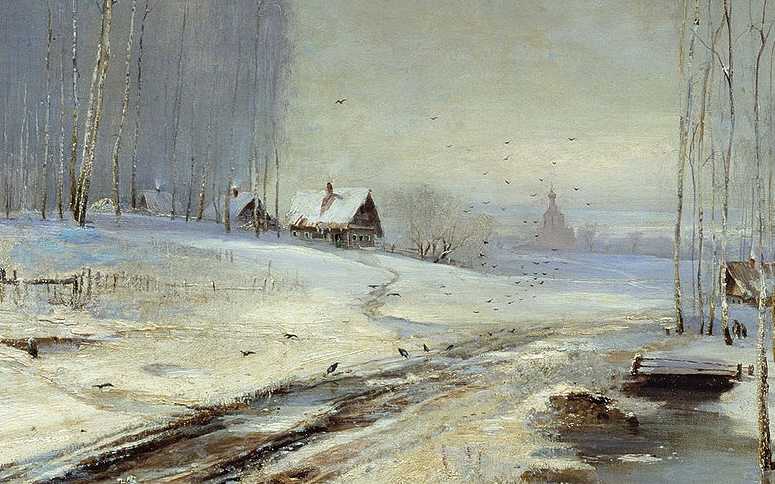
If you own a work by or about the artist Alexei Savrassov, and would like to know its value, our state-approved experts and auctioneers will offer you their appraisal services.
Our specialists will carry out a free appraisal of your work, and provide you with a precise estimate of its current market value.
Then, if you want to sell your work, we'll point you in the right direction to get the best possible price for it.
Artist's rating and value Alexei Savrassov
Savrassov is a Russian-born painter who is relatively unknown to the general public. He leaves behind a unique artistic repertoire characteristic of Russian realism.
This legacy consists of paintings, mostly oils on canvas. Today, prices for his works are skyrocketing under auctioneers' gavels.
His paintings and other works are particularly prized, especially by European and American buyers, and the prices at which they sell on the art market range from €500 to €1,077,000, a considerable delta but one that speaks volumes about the value that can be attributed to Savrassov's works.
In 2007, his composition Cottage in the woods sold for €1,077,000 in Sweden, whereas it was estimated at between €300,000 and €320,000.
Order of value from a simple work to the most prestigious
Technique used | Results |
|---|---|
Drawing - watercolor | From €500 to €90,600 |
Oil on canvas | From €850 to €1,077,000 |
Response in less than 24h
Style and technique of artist Alexei Savrassov
In The Return of the Crows (1871, Tretyakov Gallery, Moscow), Savrassov achieves that fusion of naturalism and lyrical feeling that defines his art.
With his supple, subtly nuanced brushstrokes, he modulates variations in light and atmosphere with a finesse unheard of in Russian landscape painting.
The light, almost diaphanous material detaches itself from the realistic density of Western schools to suggest, rather than describe, the melancholy of the dawning spring.
The sky, criss-crossed by grey and bluish glows, fades into infinite modulations, while the gaunt silhouettes of the birch trees, treated in fine impasto, give rhythm to the space in a vibrant verticality.
Savrassov avoids descriptive dryness with brushstrokes, where color, diluted and applied in superimposed glazes, evokes the ephemeral fragility of the moment.
Far from the monumental frontality of academic landscapes, he favors open compositions, where nature, captured in all its humility, becomes the painting's true subject.
Here, aerial perspective dissolves into a depth that is no longer illusionistic but atmospheric, where every detail contributes to the impression of transience that is characteristic of his art.
This dissolution of lines and contours, this way of inscribing light into the material itself, had a lasting influence on the generation of Ambulants, where landscape ceased to be mere décor and became the expression of a state of mind, the reflection of an inner feeling.
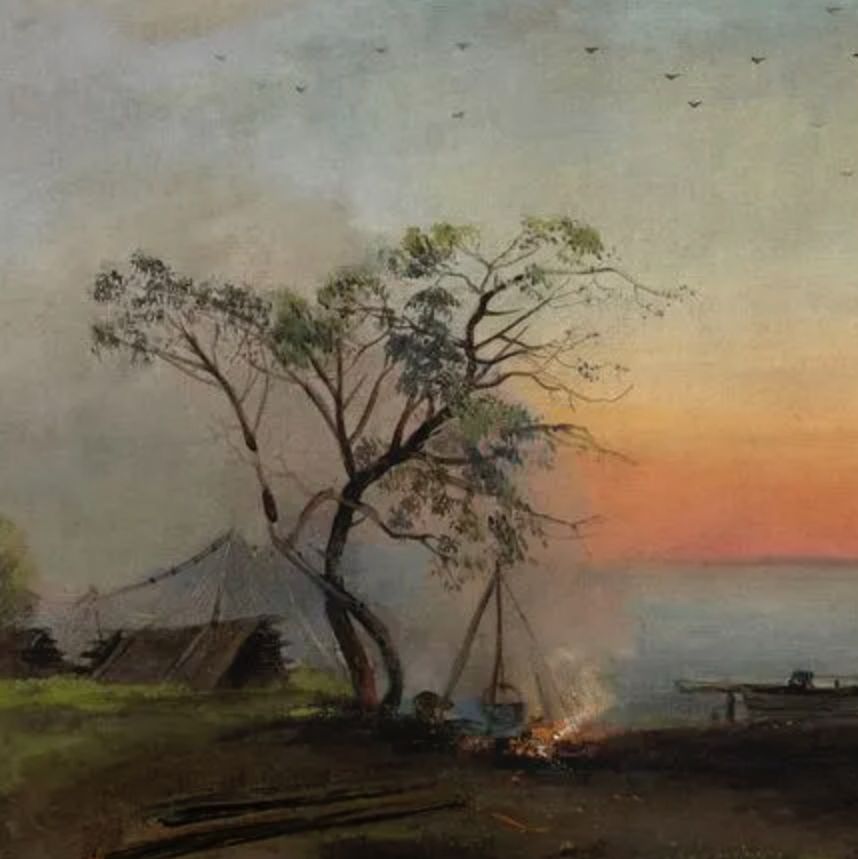
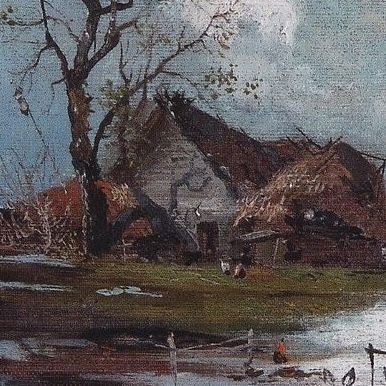
Alexei Savrassov, his life, his work
Born in Moscow in 1830, in a Russia where landscape painting was still struggling to emancipate itself from academism, Savrassov soon established himself as one of the first to endow this genre with a distinctly national sensibility.
A student at the Moscow School of Painting, Sculpture and Architecture, he quickly moved away from neoclassical rigors to explore a more intimate, atmospheric nature, where landscape is no longer limited to a faithful transcription of reality, but becomes the site of emotional resonance.
His rise was rapid: by the 1850s, his views of the Moscow region and the Volga had won him recognition, leading him to teach in his native city.
Yet it was in 1871, with The Return of the Crows, that he signed his masterpiece, a work in which the feeling for the Russian landscape reaches a rare poetic depth. But this success also marked the beginning of a gradual decline.
Plagued by personal difficulties and overwhelmed by the loss of his daughter, he gradually sank into poverty and alcoholism, despite the support of his former students, including Levitan.
At the end of his life, rejected by the Academy, he died forgotten in 1897, leaving behind a seminal body of work in which landscape painting, freed from mere imitation, became the vibrant echo of the Russian soul.
Focus on The Return of the Ravens, Alexei Savrassov, 1871
In The Return of the Crows (1871, Tretyakov Gallery, Moscow), Savrassov elevates landscape to a true emotional language, where nature is no longer just a setting but an intimate reflection of the soul.
Here, far from idealized representations or grandiose panoramas, the artist depicts a silent plain, caught in the last shivers of winter, an expanse of snow beginning to dissolve under the effect of spring's timid warmth.
The trees, already almost naked, rise into space in broken silhouettes, their branches stretching out like arms frozen in expectation. Far from the dazzling splendor of summer nature, this is a beaten earth, almost sad, where time seems suspended.
The church, in the distance, barely emerges, drowned in mist, evoking a furtive presence, a fading memory of the past.
The real subject of the painting is not so much the earth, the sky or the horizon, but this subtle relationship between the elements. The crows, in full flight, trace elegant black arabesques across a velvety gray sky.
These birds, traditional symbols of passage and return, mark the threshold of an imminent renewal.
Cool tones, mainly greys, blues and browns, are superimposed in subtle nuances that, far from freezing the scene, lend it an almost imperceptible mobility.
The background, far from being frozen, seems to melt into a fluid mist, a veil that separates the visible world from the invisible, where time stretches on and light almost fades away in favor of space and sensation.
Here, Savrassov works by subtraction, erasing unnecessary details to retain only the essential, with that rare ability to capture the essence of a scene, offering us a vision that is refined yet profoundly intense.
This bareness is not an absence, but a stronger, more vibrant presence. The landscape thus becomes a metaphor for the human soul: a humble, fragile scene, where nature carries a gentle melancholy, tinged with hope, like an echo of a bygone past and a future that is slow to blossom.
The scene itself seems suspended in silent expectation, between two worlds, between two moments, inviting the observer to lose himself in it and to rediscover, in this vast frozen plain, a little of his own humanity.
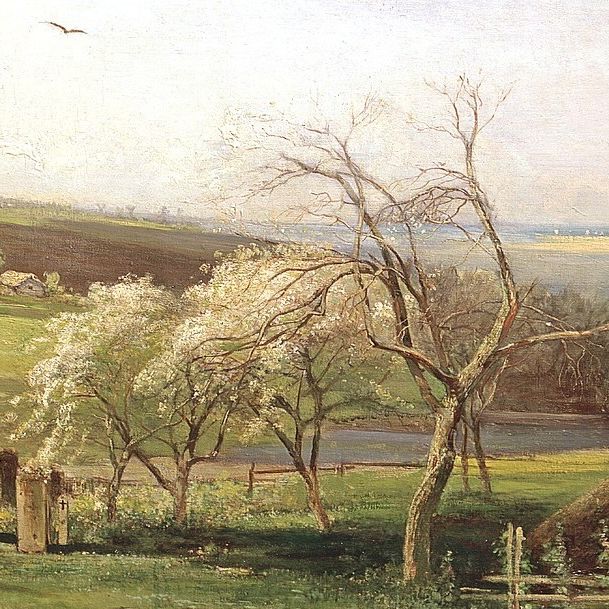
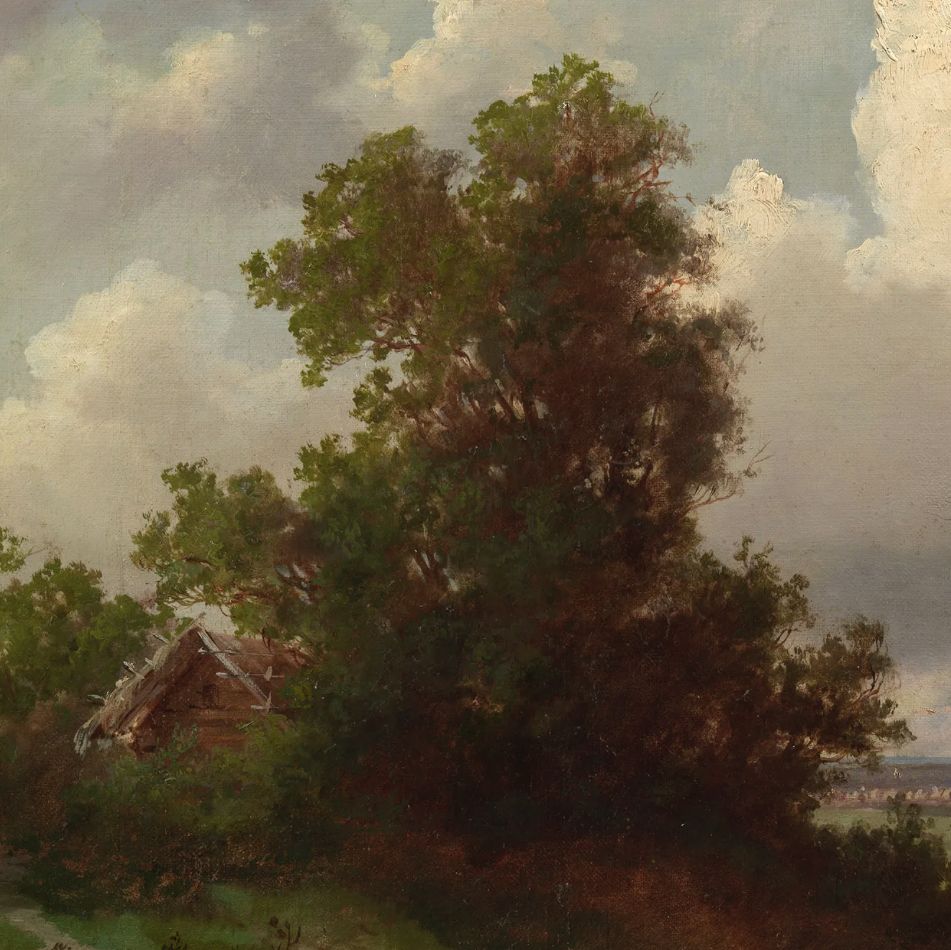
Alexei Savrassov's imprint on his period
Born in Moscow in 1830, Alexei Savrassov grew up in a Russia where landscape painting was still struggling to shake off its academic influences.
But very early on, the artist showed a very personal sensibility, moving away from rigid conventions towards a more intimate, atmospheric nature.
Although his early work seems to conform to the rules of the classical school, in certain respects it is reminiscent of the approach of contemporaries such as Ivan Shishkin, who also sought to inscribe the Russian landscape in a truth of expression.
However, Savrassov does not simply achieve a faithful reproduction of reality; he seeks to capture the essence of a landscape where light and atmosphere intertwine to convey raw emotion.
It was when he began to depict the humblest Russian expanses, the morbid beauty of winter fields or bare forests, that his painting became unique.
The famous Return of the Crows (1871), a masterpiece of poetry and solitude, is a sign of this distancing from the more idyllic representations of Russian landscapes undertaken at the same time by a landscape painter such as Fyodor Vasilyev.
Savrassov's choice of melancholy scenes, in which nature mirrors a tormented inner world, elevated him to the ranks of the greats of his time. However, his career soon took a darker turn.
Far from the effervescence of his early years, his work drowns in a slow personal decline, fueled by the pain of losing his daughter and financial difficulties.
Stylistically, he is close to other Russian landscape artists such as Constantin Korovine, Constantin Westchiloff and Mikhail Guermacheff.
In his last years, marked by poverty and alcoholism, he died in 1897, forgotten, leaving behind him a profound legacy: landscape painting which, far from being a mere transcription, became an emotional and universal language, having a lasting influence on generations of Russian landscape painters, from Levitan to Kramskoy.
Recognizing Savrassov's signature
Alexei Savrassov's paintings are often signed in the lower left-hand corner. He signs with his first and last name, often in a dark tone; sometimes with the town where he painted the picture, or the date.
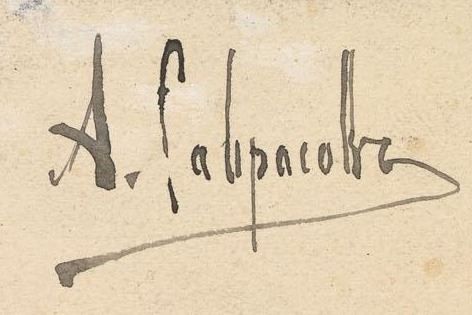
Knowing the value of a work
If you happen to own a painting by Alexei Savrassov or one based on the artist, don't hesitate to ask for a free estimate using the form on our website.
A member of our team of experts and certified auctioneers will contact you promptly to provide you with an estimate of the market value of your work, as well as any relevant information about it.
If you're thinking of selling your work of art, our specialists will also be on hand to help you find alternatives for selling it at the best possible price, taking market trends into account.
Response in less than 24h
Related topics
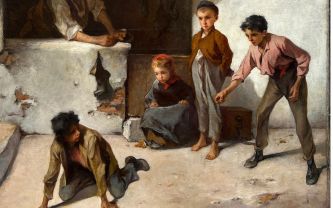
Value and quotation of works, paintings by François Reynaud
François Reynaud, a 19th-century painter, reproduces the French and Italian academic canons in his paintings. Estimated in less than 24h.
Read more >
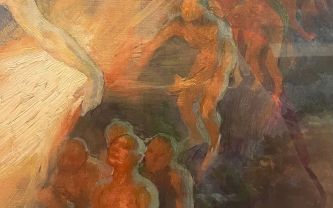
Rating and value of paintings and engravings by Albert Besnard
Albert Besnard was a symbolist painter and engraver of the 19th century. His works are highly valued on the art market.
Read more >

Rating and value of paintings, drawings and sculptures by Ernest M...
Ernest Meissonier was a 19th-century artist who produced many small-scale works and sculptures, which are now listed at auction.
Read more >
Secure site, anonymity preserved
State-approved auctioneer and expert
Free, certified estimates
